Some actor-director pairs just work in a way that feels natural from the start. You can see it in how they build scenes that don’t need much talking. You can feel it in the kind of trust that shows up on screen. These duos usually come back to each other because they know what to expect and they don’t need to overexplain things.
Scorsese and De Niro created raw and violent portraits of crime that still hold up today. Tarantino and Jackson found a rhythm in dialogue that sounds like no one else. Depp kept returning to Burton because he understood the tone without asking questions.
Some directors lean on the same actors because they know they’ll bring something strong every single time. Others just like how certain faces look under their lens. These partnerships shape more than just the movies. They shape the way we see the actors and the way we expect certain stories to be told.
They don’t always chase awards and they’re not always built on friendship. Sometimes it’s just the way one person’s vision fits into another person’s instincts. This list looks at ten duos that kept doing it right without needing to force it.
Best actor-director duos in all of Hollywood
1. Martin Scorsese & Robert De Niro
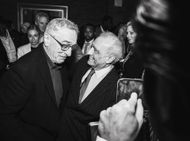
This duo helped shape modern American cinema. Their work together began with Mean Streets and hit new ground in Taxi Driver, where De Niro’s quiet rage fit Scorsese’s portrait of isolation. Raging Bull pushed that further, using violence and silence to show emotional collapse.
Goodfellas and Casino built a detailed world of organized crime, with De Niro’s calm exterior holding layers of control and pressure. In The Irishman, they revisited that world with age and regret. Scorsese trusts De Niro to carry tension without saying much, and De Niro delivers with control that never feels forced or showy.
2. Martin Scorsese & Leonardo DiCaprio
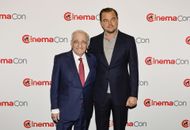
When Scorsese started working with DiCaprio in Gangs of New York, he found someone who could shift between rage, charm, and confusion without breaking focus. The Aviator proved DiCaprio could play a man spiraling into obsession.
The Departed used his intensity to show a character under constant pressure. Shutter Island blurred the line between trauma and delusion, and The Wolf of Wall Street turned chaos into control. In Killers of the Flower Moon, they took on historical violence through quiet, personal betrayal. Scorsese shapes the world, and DiCaprio finds the breaking point inside every man he plays.
3. Quentin Tarantino & Samuel L. Jackson
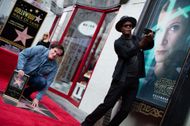
Tarantino writes scenes that depend on rhythm and pauses, and Jackson knows how to stretch both. In Pulp Fiction, he turned a hitman into a man of weird conviction. In Jackie Brown, he gave a small-time criminal enough presence to dominate every scene.
Django Unchained let him play cold calculation hidden behind fake loyalty, while The Hateful Eight used every ounce of tension he can hold in a stare. Jackson doesn’t just say Tarantino’s lines. He knows where to slow down, where to cut off, and how to make every insult or threat feel like a power move.
4. Tim Burton & Johnny Depp
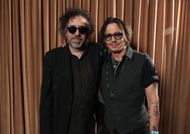
Burton saw Depp as more than a teen heartthrob and gave him odd, sad, damaged men to play. Edward Scissorhands used silence and movement to tell a full story of loneliness. Ed Wood took a real figure and leaned into his optimism without turning him into a joke.
In Sweeney Todd, Depp sang rage and grief with zero theatrics. Charlie and the Chocolate Factory showed how far they were willing to stretch tone and risk. Depp gets Burton’s style without needing explanation. Burton gives Depp space to disappear inside oddball characters without losing what makes them believable.
5. Christopher Nolan & Michael Caine
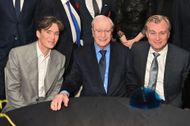
Caine became the one consistent thread in Nolan’s shifting worlds. In Batman Begins, he gave Bruce Wayne’s story warmth and context. In The Prestige, he helped ground a film built on obsession. Inception used him as a sign of emotional memory in a film full of logic puzzles.
Interstellar made him the scientist willing to manipulate hope. Even in Tenet and Oppenheimer, where his screen time is short, Caine gives scenes gravity. Nolan trusts him to carry backstory with just a few words, and Caine always finds the line between intellect and heart without making it too obvious.
6. Wes Anderson & Bill Murray
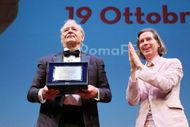
Murray first worked with Anderson in Rushmore and the two never really stopped after that. In The Life Aquatic he played a man falling apart in front of his own camera. In Moonrise Kingdom he became a father trying to follow rules that no longer helped.
In The French Dispatch he played the weary editor who held the whole thing together. Anderson writes with a very specific tone and Murray just understands it without needing to change much. His stillness holds all the strange pieces in place and that is why Anderson always makes room for him somewhere.
7. Steven Spielberg & Tom Hanks
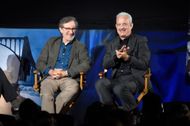
Spielberg gives Hanks characters who carry weight without needing big speeches. In Saving Private Ryan Hanks showed how war wears down even the most decent men. In Catch Me If You Can he chased a teenage con artist without turning into a cartoon.
In The Terminal he played a man stuck in a place no one cares about. In Bridge of Spies and The Post he stood for calm leadership during chaos. Hanks gives Spielberg a steady presence to build around. He plays quiet conviction in a way that makes every scene feel more grounded and more real.
8. Clint Eastwood & Himself (as Actor-Director)
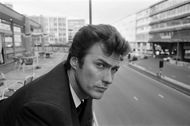
Eastwood keeps everything simple when he directs and he performs with the same approach. In Unforgiven he played a man who killed again after years of trying not to. The film did not make that return look noble.
In Million Dollar Baby he showed what it looks like when someone gives up on life in pieces. In Gran Torino he played a bitter man who did not care what the world thought of him. These films work because he strips away anything extra. What is left is a character who feels real because he never explains himself.
9. Greta Gerwig & Saoirse Ronan

Gerwig builds characters through very small decisions and Ronan knows how to make those feel big without pushing too hard. In Lady Bird she played a teenage girl who felt stuck in a life that did not match her ambition. In Little Women she played Jo March with enough force to make her choices feel earned.
Gerwig lets Ronan guide the tone without needing to shape every beat. Ronan never turns anything into a performance. Every movement feels like it comes from someone real. That is why these two work together without having to force anything to land.
10. Paul Thomas Anderson & Philip Seymour Hoffman
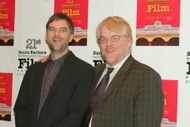
Anderson writes people who sit between control and collapse and Hoffman always knew how to hold both at once. In Boogie Nights he played a man full of shame who never said a word about it. In Magnolia he played a nurse trying to bring some peace into someone else’s storm.
Punch-Drunk Love gave him a role where rage came out of nowhere. In The Master he played a man who convinced others he had all the answers. Hoffman never made things too clean. His characters felt like they had lived through something before the scene even started.
Follow for more updates.
Love movies? Try our Box Office Game and Movie Grid Game to test your film knowledge and have some fun!
